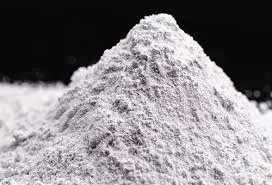
Dùbh . 06, 2024 14:23 Back to list
Solubility of Hydroxyethyl Cellulose in Ethanol and Its Implications for Application
Understanding Hydroxyethyl Cellulose Solubility in Ethanol
Hydroxyethyl cellulose (HEC) is a water-soluble polymer derived from cellulose, a biopolymer obtained from plant cell walls. HEC has gained significant traction in various industries due to its unique properties, which include thickening, emulsifying, and film-forming capabilities. One area of interest is the solubility of HEC in ethanol, which has implications in fields such as cosmetics, pharmaceuticals, and food technology. This article delves into the solubility characteristics of HEC in ethanol, exploring the factors affecting its solubility, practical applications, and potential alternatives.
Characteristics of Hydroxyethyl Cellulose
Hydroxyethyl cellulose is synthesized through the etherification of cellulose with ethylene oxide, leading to the introduction of hydroxyethyl groups into the cellulose structure. This modification enhances its water retention capacity and thickening efficiency, making it a versatile ingredient in a range of formulations. HEC has excellent compatibility with various solvents, primarily due to its ability to form hydrogen bonds with water molecules.
Solubility in Ethanol
When it comes to solubility in ethanol, HEC exhibits a distinctive behavior that can be influenced by various factors. Ethanol, a polar solvent, has a unique ability to dissolve both polar and non-polar compounds to some extent. However, HEC is primarily known for its solubility in water, prompting a deep dive into its solubility in mixed solvents and ethanol specifically.
Factors Influencing Solubility
1. Ethanol Concentration The solubility of HEC increases with a decrease in ethanol concentration. In low concentrations of ethanol, HEC can dissolve, but as the ethanol percentage increases, the polymer often precipitates out of solution. This behavior can be attributed to the reduced availability of polar solvent molecules (water) that favor the solvation shell around the HEC polymer.
2. Temperature Temperature is another crucial factor that impacts HEC’s solubility in ethanol. Generally, increasing temperature enhances solubility due to increased molecular movement, which helps to disrupt intermolecular interactions. Experiments have shown that heating the solution can facilitate better dissolution of HEC in ethanol, particularly at lower ethanol concentrations.
hydroxyethyl cellulose solubility in ethanol

3. Molecular Weight of HEC The molecular weight of HEC also plays a crucial role in its solubility. Higher molecular weight HEC may have lower solubility in ethanol due to increased entanglement and stronger intermolecular forces compared to lower molecular weight counterparts. Choosing the appropriate grade of HEC based on its application is vital for achieving the desired solubility characteristics.
4. pH Variation Although pH primarily affects HEC’s solubility in aqueous systems, it can indirectly influence solubility in ethanol through its effects on the polymer's structure. Depending on the formulation conditions, adjusting the pH may enhance or hinder the dissolution of HEC in ethanol.
Practical Applications
Understanding the solubility of HEC in ethanol has several practical implications. For instance, in the cosmetic industry, HEC is often used in formulations such as creams, lotions, and gels where both water and alcohol are present. By formulating with the right concentrations and temperatures, formulators can achieve a stable product with the desired rheological properties.
In pharmaceuticals, HEC’s solubility characteristics can be harnessed to develop drug delivery systems. HEC can be used to create controlled-release formulations, where its solubility in various solvents can be manipulated to regulate the release rate of therapeutic agents.
Additionally, in food technology, HEC's solubility in ethanol can impact the stability and texture of food products, especially in emulsifications and stabilizing systems.
Alternatives and Conclusion
While HEC is a valuable material, its limitations in ethanol solubility may lead formulators to explore alternatives such as other cellulosic derivatives or synthetic polymers that exhibit better solubility profiles. However, each of these alternatives comes with its own set of benefits and drawbacks.
In conclusion, hydroxyethyl cellulose is a multifunctional polymer with varying solubilities in ethanol, primarily influenced by factors such as concentration, temperature, molecular weight, and pH. As industries continue to innovate and develop formulations that leverage the unique properties of HEC, understanding its solubility behavior will remain pivotal in optimizing product efficacy and performance. Armed with this knowledge, formulators can better navigate the myriad applications of HEC, driving forward advancements across several fields.
-
Unlocking the Benefits of HPMC Products: A Gateway to Versatile Applications
NewsAug.07,2025
-
Unleashing the Potential of HPMC Ashland: A Comprehensive Look
NewsAug.07,2025
-
Tile Bonding Cellulose: The Key to Superior Adhesion and Durability
NewsAug.07,2025
-
Hydroxypropyl Methylcellulose Powder: The Versatile Component in Modern Pharmaceuticals
NewsAug.07,2025
-
Hydroxyethyl Cellulose: The Versatile Solution for Various Industries
NewsAug.07,2025
-
Hydroxyethyl Cellulose (HEC): The Versatile Polymer for Various Applications
NewsAug.07,2025







